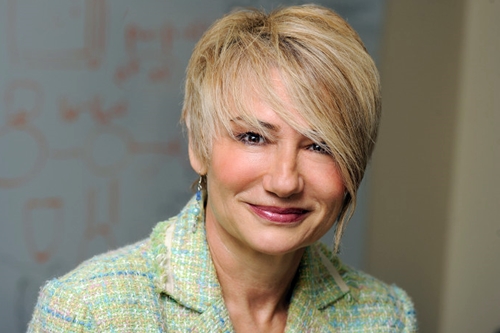11 May 2016. A medical engineering team developed three-dimensional computer models of the heart that better predict heart rhythm problems requiring an implanted defibrillator than current guidelines. Researchers at Johns Hopkins University led by biomedical engineering professor Natalia Trayanova published its findings yesterday in the journal Nature Communications.
Trayanova and colleagues from the Johns Hopkins medical and public health schools in Baltimore are seeking better tools through computational techniques to decide on treatments for people facing the risk of sudden cardiac death from arrhythmia, or abnormal uncoordinated heart rhythms. At particular risk are individuals who suffered previous damage from heart attacks and related cardiac problems. The standard of care in these instances is an implanted defibrillator that senses the onset of abnormal heart rhythms and sends an electric impulse to put the heart back on a normal beat.
Receiving an implanted defibrillator, however, is an invasive surgical procedure. In their paper, Johns Hopkins team assessed its technology that the researchers say offers a better understanding of an individual’s particular heart rhythm problems. Their system then indicates patients most in need for an implanted device, and persons who would benefit from other therapies not requiring surgery.
That technology, called virtual-heart arrhythmia risk predictor or Varp, creates a 3-D geometric model of an individual’s heart from magnetic resonance imaging scans. The model processes the MRI images and generates a simulation of pumping capability at various points in the heart, including 17 sites for evaluating the pace of beats in the left ventricle that pumps blood out the aorta to the body. The simulations are detailed, including signals between cardiac cells.
The Varp system uses cardiac modeling software made by the company CardioSolv Inc. in Baltimore, a spin-off enterprise from Johns Hopkins University founded by Trayanova, to generate the simulations, assess the patient’s individual therapy requirements, and predict the need for a defibrillator. The authors note that open-source cardiac simulation software is also available.
The team tested the Varp technology with records of 41 individuals who survived heart attacks, randomly sampled from a clinical trial testing implanted defibrillators, divided between patients with heart rhythm events (21) and those without (20). All 41 patients recorded ejection fractions — a measure of blood pumped from the left ventricle — under 35 percent. That 35 percent level is a one of the key guidelines for deciding on an implanted defibrillator, and all of the patients received a device.
Individual assessments made by Varp models were compared to the patients’ medical histories and subsequent outcomes. The results indicate patients in the sample shown by Varp to be at high risk for arrhythmia, were 4 times more likely to experience those problems than individuals rated at lower risk. In addition, the Varp model was 4 to 5 times better at predicting occurrences of arrhythmia than the 35 percent ejection-fraction guideline and similar criteria.
“By accurately predicting which patients are at risk of sudden cardiac death,” says Trayanova in a university statement, “the Varp approach will provide the doctors with a tool to identify those patients who truly need the costly implantable device and those for whom the device would not provide any life-saving benefits.”
Trayanova and co-authors Katherine Wu, Fijoy Vadakkumpadan, and Hermenegild Arevalo filed a patent application for the Varp technology.
Read more:
- Genomic Variations Reveal Cholesterol, Heart Disease Risks
- NIH Funds Biosensors to Monitor Oxygen in Tissue
- Stem Cells Shown to Improve Heart Failure Health Outcomes
- Crowdsourcing Yields Heart Disease Algorithm
- EKG Technology Integrated into Apple Watch Band
* * *


 RSS - Posts
RSS - Posts
You must be logged in to post a comment.